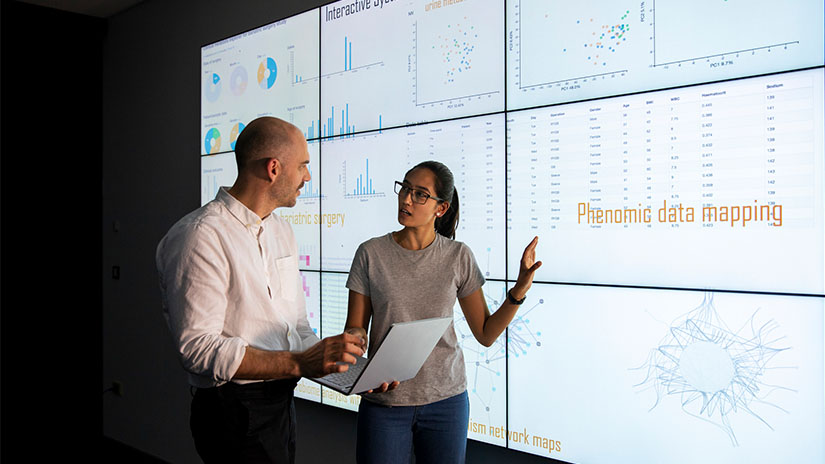By Harsha Badarinarayan Ph.D., Vice President, Hitachi America, Ltd.
Mobility equity plays a foundational role in ensuring fair and equal access to every societal necessity, from schools to supermarkets. The collection of accurate, representative transportation data therefore underpins equitable access not only to transit but also to every essential service in a community.
The challenge of gathering accurate data and analyzing it effectively is best met through public-private partnerships. Collaboration between these sectors is key to clarifying data collection objectives and the value of data analyzed. Without that clarity, analysis could be compromised, potentially resulting in biased conclusions that may not serve the public good.
The private sector is well-positioned to finance large projects with peak efficiency, and its facility with impactful data-gathering technologies allows for the targeted, granular data collection required to gain a representative data set. The data collection and analytics expertise of organizations such as Hitachi makes them powerful partners for providing communities with innovative technology to move toward transportation equity.
To achieve transportation equity, authorities must have a reliable source of comprehensive and contemporary data. Collection must occur via a thorough understanding of the community’s actual needs, and the data itself must help meet those needs. Reliance on historical data is insufficient, as it may not account for changes in the population or accurately represent underserved populations.
Participation and information-sharing by individuals provides the most fundamental basis for building data models that address equity in transportation. But tapping this crucial data source requires organizations to build public trust by demonstrating responsibility with personally identifiable information (PII), transactional transparency and accountability.
For example, where the data reveals PII, those details must be treated in accordance with privacy policies that govern usage. Often, PII can be avoided altogether. For example, organizations can remove fine-grained data such as cell-phone location data and replace it with aggregate data.
Organizations must also demonstrate transactional transparency by informing customers about the data they will collect, how they will collect it and the purpose for its use. The data should be held to the highest standards of collection, storage and release in accordance with existing policies and practices for PII.
One way to instill confidence is for a trusted, neutral intermediary to manage this data and to preserve the privacy of end consumers while ensuring that the data used creates value safely and fairly.
Finally, the data collection process must facilitate repeatability and scalability by using a standardized recording of the approach.

Organizations also face challenges in the data analysis phase — such as the cost of advanced analytics and the need for the right tools, resources and expertise. This is where public-private partnerships shine. Transit authorities and municipalities can partner with private technology companies, who have the tools and expertise already field-tested and ready to deploy, to develop the right models.
Standardizing data-sharing is an important first step in improving access and reducing costs and procedural overheads. An open-source data exchange standard, for example, can provide common access to data across various providers, municipalities and customers. Policymakers and private sector stakeholders must also be cognizant of the mobility challenges that rural communities face. Areas with significantly smaller populations and less developed transit infrastructure may have fewer transportation options. The Rural Transit Fact Book notes that just 4% of rural households use public transit, versus 31% of their urban counterparts.1 At the same time, availability of ride-sharing and -hailing services is often limited in these communities.
Efficient use of data in these areas can help develop high-fidelity mathematical models that can improve ecosystem-level performance management across scheduling, coordination and maintenance of rural fleets. Mixed-method and randomized control trials can identify inherent bias in the data. Other techniques such as combining multiple sources of data may be valuable for cross-checking and validation.

Data analytics and artificial intelligence (AI) are essential to these efforts. AI-based advanced planning and scheduling software, for example, can optimize operations and manage assets more efficiently by routing vehicles to where demand is greatest, as well as supporting predictive maintenance and repair. And video analytics supported by cameras, LiDAR and other technologies (with appropriate implementation of privacy measures) can assess volumes of public transit use in populations where cellphone and other digital data are less common.
Analytics and AI can accurately forecast demand so that transit authorities can provide more personalized transit service without dismantling and redesigning entire systems. They help organizations overcome geographical boundaries and eliminate data inefficiencies while improving service.
Hitachi’s vision of mobility extends beyond the technology related to vehicles themselves to the entire transportation ecosystem. This perspective is ideally suited to launching innovations that help municipalities realize equity in underserved communities. It supports the formation of partnerships with key stakeholders, including providers of infrastructure, communication, and data collection and storage services that interplay with Hitachi’s advanced transportation technology, analytics and cybersecurity.

Vice President, Hitachi America, Ltd.
Harsha Badarinarayan is the Vice President of Research and Development at Hitachi America, Ltd. He has been with Hitachi for over 18 years. In his current role, Harsha is involved in Technology Strategy & Planning for automotive business expansion in the U.S., specifically related to the Autonomous Vehicles & Connected Mobility. His work focuses on developing automated driving technology and identifying potential go-to-market (GTM) opportunities for automotive-related use cases. Harsha holds 15 U.S. patents and has authored or co-authored over 30 technical publications.